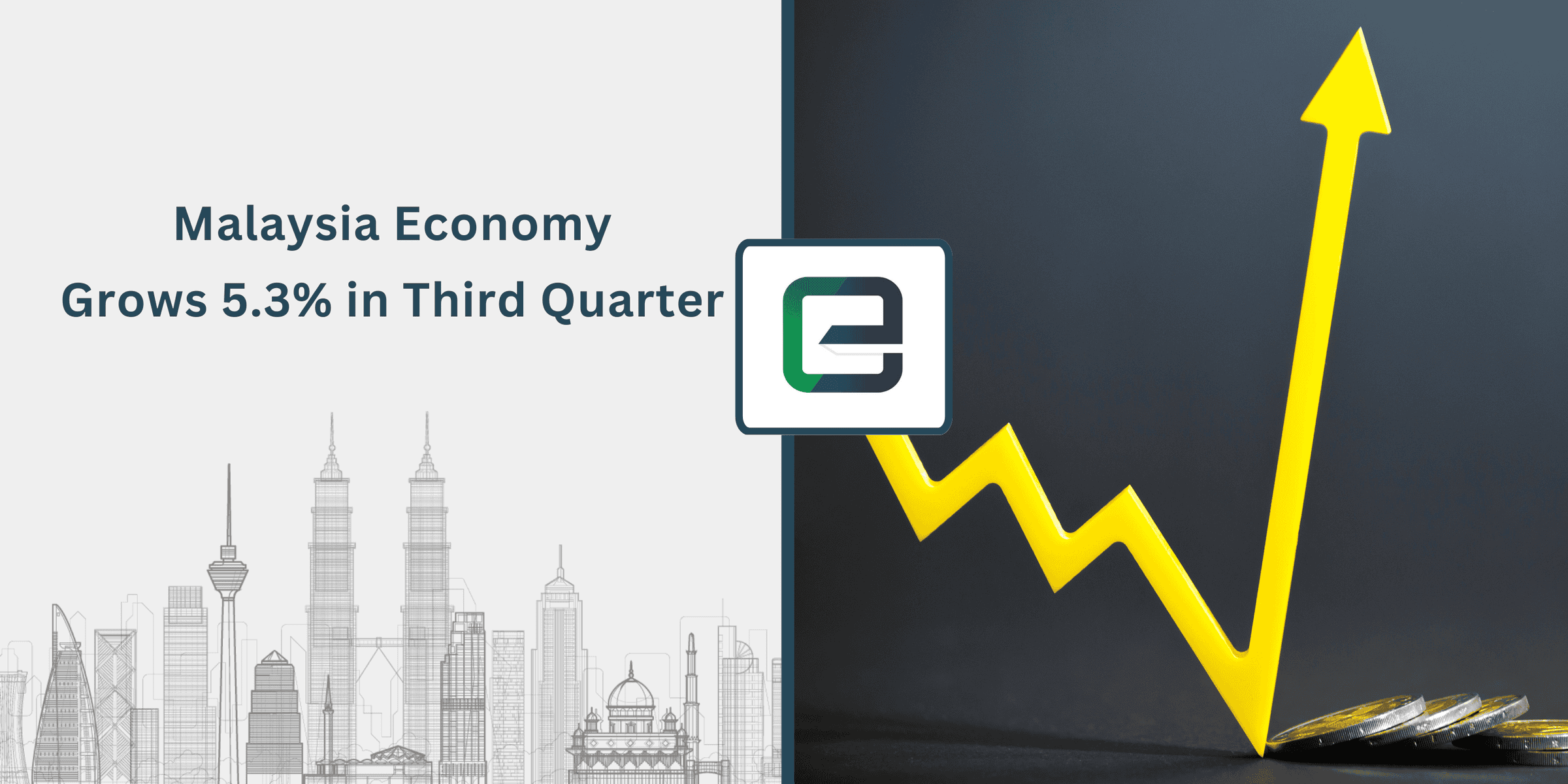Malaysia’s economy has grown by 5.3% in the third quarter of 2024, following a 5.9% expansion in the previous quarter. This growth was fueled by strong investments and a steady improvement in exports.
What Drove the Growth?
Several factors were behind it, including:
Investments on the Rise
Spending on structures, Machinery and Equipment (M&E) played a major role in driving investments. Similarly, households continued to spend, thanks to a strong job market and supportive policies.
Exports Picking Up
Exports surged as global demand recovered, particularly with a boost from the global tech upcycle. On the other hand, imports also grew quickly due to higher demand for capital and intermediate goods needed for investments and trade.
Sector Contributions
Most sectors contributed to growth, with manufacturing leading the way, thanks to its focus on exports. However, some growth was offset by maintenance activities in the mining sector.
On a quarter-on-quarter basis (seasonally adjusted), growth momentum slowed slightly to 1.8%, compared to 2.9% in the previous quarter. Overall, the economy expanded by 5.2% in the first nine months of 2024.
Inflation Holds Steady at 1.9%
Inflation remained stable during the quarter, with both headline and core rates at 1.9%. Diesel prices rose significantly (20.1%), alongside a slight increase in vehicle insurance costs (0.8%). However, these were balanced by a moderation in food and beverage inflation (1.6%), particularly for dining out, cereals, and fresh vegetables. The share of Consumer Price Index (CPI) items recording price increases also declined from 49.4% to 38.9%.
How Did the Ringgit Perform?
In the third quarter, the ringgit appreciated 14.9% against the US dollar and 9.9% on a nominal effective exchange rate (NEER) basis. The ringgit appreciation was partly due to the US Federal Reserve’s move toward a more relaxed monetary policy, which eased pressure on regional currencies.
Between October 1 and November 13, the ringgit depreciated 7.8% against the US dollar, mainly due to the strengthening dollar driven by positive US economic data and smaller-than-expected policy rate cuts.
Despite this, year-to-date (as of November 13, 2024), the ringgit still appreciated by 3.1% against the dollar and 6.6% on a NEER basis.
Looking ahead, external factors will continue to influence the ringgit. That said, Malaysia’s robust economic outlook and structural reforms are expected to support the currency in the medium term. Bank Negara Malaysia (BNM) remains focused on maintaining a stable and orderly foreign exchange market.
Credit Growth Insights
Credit growth to the private non-financial sector slowed to 4.8% in Q3 2024, down from 5.5% in the previous quarter. This moderation was due to slower loan growth for non-SMEs, while loans to SMEs remained strong.
Household loans, particularly for housing and cars, continued to grow steadily. Applications and approval rates for household loans also showed encouraging trends.
What’s Next for Growth?
Bank Negara Malaysia Governor Dato’ Seri Abdul Rasheed Ghaffour remains optimistic, stating that Malaysia’s growth will be driven by:
- Investment Projects: Progress in multi-year initiatives across private and public sectors, coupled with national master plan projects, will play a key role.
- Household Spending: Continued job and wage growth, along with supportive policies, will keep households spending.
- Export Strength: The global tech upcycle, strong demand for manufactured goods and commodities, and increased tourist spending will boost exports.
While challenges remain, such as slower global demand, geopolitical tensions, and weaker commodity production, there is upside potential from faster project implementation, stronger tourism, and benefits from the tech upcycle.
Inflation Expectations
So far this year, inflation has averaged 1.8%. Effective measures have kept diesel price adjustments from significantly affecting broader prices. Moving forward, inflation trends will depend on domestic policies regarding subsidies and price controls, as well as global commodity and financial market developments.








